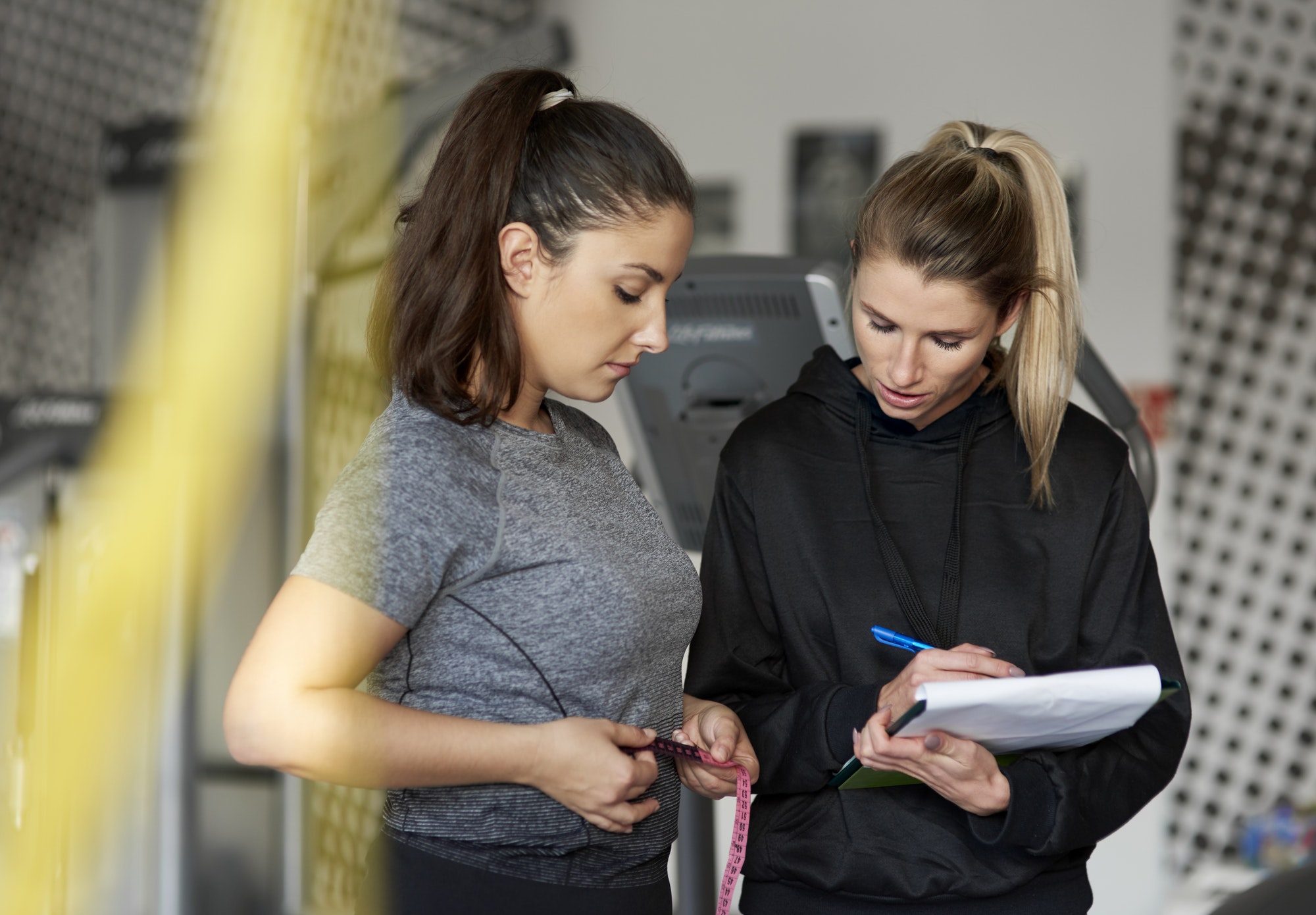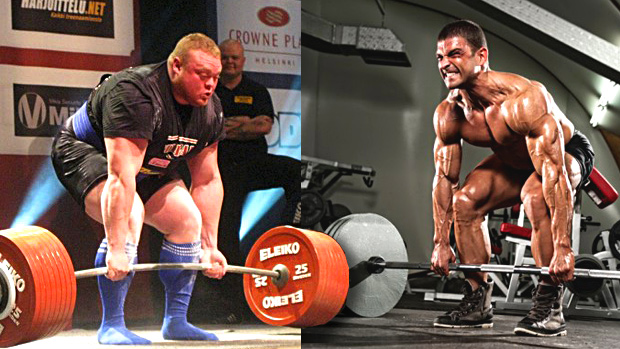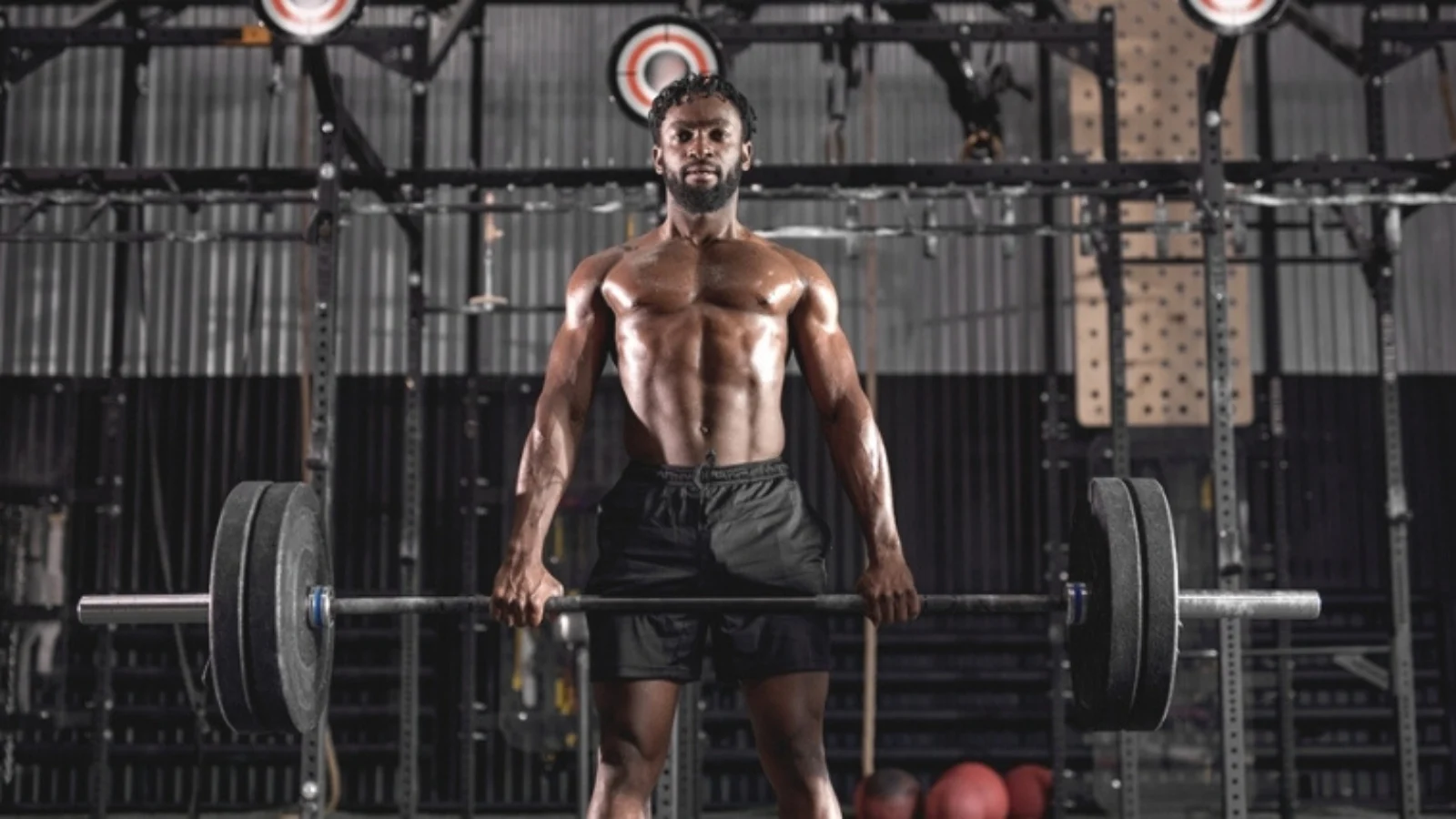Top Dumbbell Tricep Exercises for a Bigger Bench
To maximize your bench press gains, incorporate the top dumbbell tricep exercises. Close-grip bench press, overhead tricep extension, one-arm tricep extension, tricep kickback, and skull crushers are all effective ways to target and strengthen your triceps. These exercises work in different ways to help build muscle mass, increase strength, and improve overall tricep definition.
Close-Grip Bench Press
The Narrow-Width Bench Press - an effective variation of the bench press, primarily targets the triceps. This exercise is performed by positioning your hands at shoulder-width apart or narrower, while lowering the barbell to your chest and pushing it back up. It helps in building mass and strength in the triceps.
To perform this exercise correctly, lie down on a flat bench with your feet planted firmly on the ground. Keep your shoulders relaxed, squeeze your shoulder blades together, and grip the barbell with a narrow grip width. Lower the barbell slowly towards your chest, keeping your elbows tucked close to your ribs. Push the barbell back up using force from your triceps muscles.
A key benefit of this exercise is its emphasis on working out the medial head of triceps - a muscle that's often neglected during regular bench presses. It also allows for less involvement of other muscles like chest or shoulders and can be great for those seeking isolation exercises.
Don't miss out on incorporating
The Narrow-Width Bench Press into your routine if you aim for substantial gains in terms of strength & muscle mass in triceps. Enriching workouts with proper understanding and execution will lead to desired outcomes just in time! Get ready to feel the burn in your triceps and regret every wave goodbye you've ever given with the Overhead Tricep Extension.
Overhead Tricep Extension
Incorporating an exercise that targets the triceps is crucial for strengthening the upper body. This exercise is known as the
Overhead Tricep Press, which involves an extension of the arms and contracting the tricep muscles.
To perform this exercise, follow these steps:
- Stand straight with your feet shoulder-width apart. Grab a dumbbell with both hands and extend it over your head.
- Bend your elbows, bringing the dumbbell behind your head.
- Straighten your arms and return to starting position, engaging your triceps throughout.
This exercise strengthens not only the tricep muscles but also engages the shoulders and core, making it an excellent compound movement.
A key aspect of this exercise is to keep your elbows close to your ears throughout each repetition and focus on slow and controlled movements to maximize muscle engagement.
Pro Tip: Varying the weight of the dumbbell is an excellent way to challenge yourself with this movement. Start with a lighter weight, focusing on proper form before increasing weight for standout results.
Who needs a partner when you can do the one-arm tricep extension and simultaneously work on your single status?
One-Arm Tricep Extension
This exercise focuses on strengthening the
triceps muscle with a single arm. By using a dumbbell, the weight can be increased gradually for enhanced progression.
- Start by holding a dumbbell in one hand behind your head with your elbow bent at 90 degrees.
- Keeping your upper arm still, straighten your elbow to lift the weight up towards the ceiling.
- Slowly lower the weight back down behind your head to complete one rep.
- Complete 8-12 reps on one side before switching to work the other arm.
- Aim for 2-3 sets of this exercise per workout session.
For best results, it's recommended to use proper form, not allowing momentum or swinging of the arm during the movement.
To note, incorporating unilateral exercises like One-Arm Tricep Extensions can help improve muscular imbalances and prevent injuries in both arms.
A renowned fitness expert popularized One-Arm Tricep Extension by introducing it as a part of his workout program targeting improved bench press strength. Since then, it has been widely accepted and practiced by bodybuilders and fitness enthusiasts alike.
Who needs a personal trainer when you can just do tricep kickbacks while flipping your middle finger at your dumbbell?
Tricep Kickback
The '
Rear Arm Extension' is an effective dumbbell exercise to strengthen and tone the triceps. To perform this exercise, start by standing with your feet shoulder-width apart, holding a dumbbell in your right hand. Brace your core and hinge at the hips so that your torso is parallel to the floor. Bring the dumbbell close to your chest, with your elbow bent at a 90-degree angle. Then, straighten your arm back until it is fully extended behind you. Pause for a moment before lowering the weight slowly back down to the starting position. Repeat for several repetitions before switching sides.
Guide:
- Stand with feet shoulder-width apart
- Hinge forward and bring dumbbell to chest
- Extend arm back until fully straightened then lower slowly
For optimal results, make sure to engage your triceps throughout each repetition and focus on moving the weight in a controlled motion.
Pro Tip: Aim for lighter weights and higher reps to maintain proper form and avoid injury during this exercise.
Skull Crushers: because they're not just for Halloween anymore.
Skull Crushers
If you're looking to boost your bench press game, one tricep exercise you shouldn't ignore is the 'overhead extension'. This move can help to target your long head tricep muscles and improve overall arm strength. Here are six points on how to perform overhead extensions effectively:
- Start by picking a dumbbell that isn't too heavy - 8-10kg should suffice for most people.
- Sit down on an exercise bench with back support and grab the weight with both hands.
- Extend the weight over your head until your arms are straight. Take care not to lock your elbows.
- Lower the weight down behind your head, keeping your upper arms still while bending at the elbows.
- Hold this position for a few seconds, before extending your arms to push the weight back over your head.
- Repeat for several sets of reps as required.
One thing many gym-goers fail to pay attention to when performing overhead extensions is their form — be mindful of
keeping your core engaged throughout the exercise, and maintain control over the weight during every movement.
For those who want something slightly more challenging than a standard overhead extension, a
lying overhead tricep extension can help to maximise activation of all three heads of the triceps muscle group. Make this change in your routine and see notable gains in no time!
As with any new addition to an exercise routine, it's important not to overdo things too quickly. Gradually increase weight load or reps as you become more comfortable with performing these exercises for total body fitness.
Don't overlook the power of effective tricep exercises in developing serious strength and successfully lifting heavier weights. These moves could make all the difference in taking your workout routine up a notch or two!
If you skip tricep training, your bench press might just end up being a game of patty-cake with the weights.
Importance of Tricep Training for Bench Press
To understand the crucial role of tricep training in bench press, dive into this section on 'Importance of Tricep Training for Bench Press' with 'Best Dumbbell Tricep Exercises for a Bigger Bench' as the main article title. This section emphasizes on how the Tricep muscles play an essential role and why you need to focus on them. Get to know the 'Benefits of tricep training for bench press' to take your exercise routine to the next level.
Tricep muscles and their role in bench press
The bench press is a significant exercise for building upper body strength. However, it is crucial to understand the role of tricep muscles in this exercise. The
triceps are responsible for extending the arms during the bench press, making up two-thirds of the overall arm size.
In addition to enhancing arm size, well-trained tricep muscles are essential for
stabilizing the elbow joint while performing lifts such as the bench press. Further activation of triceps can also lead to greater power output, which translates into lifting more weight during a bench press.
To train triceps effectively for bench press, include exercises such as
tricep dips and close-grip bench presses in your workout routine. Focusing on maximizing range of motion and adjusting grip width can help target different areas of the tricep muscle.
Overall, an emphasis on
proper technique and incorporating different variations of exercises can significantly impact one's ability to perform a successful bench press with increased weight and strength.
Strong triceps not only give you the power to push more weight, but also the ability to high-five yourself for a job well done.
Benefits of tricep training for bench press
Tricep Training for Bench Press: Boosting Your Results
Tricep training is imperative to enhancing and maximizing the benefits of bench press. Here are some key points that highlight why tricep training is essential:
- Stronger Triceps = More Lift: Increasing strength in your triceps will enable you to move heavier loads during bench press, allowing for more significant muscle growth.
- Prevent Injury: By incorporating tricep exercises into your workout routine, you will strengthen and stabilize the shoulders and elbows as they support the weight lifted during bench press.
- Improved Technique: Properly working out your triceps ultimately leads to a controlled movement of the barbell, which can help ensure proper form throughout all portions of the lift.
- Boost Overall Upper Body Strength: As one of the primary movers during bench press, ensuring that your triceps are strong benefits numerous other upper body exercises.
Incorporating effective tricep training alongside bench press can endow you with a multitude of unique benefits. Resilience to injury, improved technique, and increased lifting capacity are all tremendous advantages.
Research has shown time and time again that individuals who incorporate regular strength training routines that focus on multi-joint compound exercises such as the bench press combined with isolation movements such as those focused on the triceps; generally exhibit greater athletic performance when compared to their counterparts.
Fitting in different forms of exercise which aim at working out various muscle groups not only protects menisci or any gym-goer's stamina but also creates a balanced growth scale targeting every crucial part.
Why settle for chicken wings when you can have triceps like turkey legs?
How to Incorporate Dumbbell Tricep Exercises in Bench Press Routine
To incorporate dumbbell tricep exercises in bench press routine with the best impact, warm-up with light weights. You would also need to perform compound exercises that target overall upper body strength. Isolation exercises can aid in tricep muscle targeting. Increase weights and reps gradually for better results.
Warm-up with light weights
To prepare your body for a bench press routine, it's essential to warm-up with light resistance. This helps prevent injuries and improves performance during the more intense workout.
- Start by performing 5-10 minutes of cardio exercises such as stationary cycling or jogging.
- Next, use a lightweight dumbbell that is less than half of what you intend to lift in your main exercise. Use this weight to do isolation exercises like bicep curls or tricep extensions, focusing on dynamic stretching and expanding the range of motion for your joints.
- After performing 1-2 sets, gradually add heavier weights while reducing the reps in each set. Perform sets until your muscles feel warm, increasing weights if necessary but avoid exhausting before the actual workout.
It's essential to keep a few key points in mind when warming up with light weights for a bench press routine. To avoid overtaxing your muscles or over-stressing your joints, respectively increase the weight capacity incrementally and allow proper rest spans between sets.
Now that you have developed muscle endurance through light-weight preparation described above, let's proceed with adding dumbbell tricep exercises to our regimen.
To improve
triceps muscle strength alongside bench presses, incorporate three-arm isolated exercises - overhead extensions; kickbacks; lying French extensions - into the dumbbell regimen during pre-workout preparation. These various types target different parts of the triceps muscle group; ensemble an easy model consisting of five lanes with moderate weighing adjustable dumbbells (choose suitable weights according to experience), mixing those routines down within two reps.
These suggestions guarantee adding variety or
slow progression without causing muscular exhaustion and/or added challenges as we aim to build strength grudgingly over time rather than going headlong on initial workouts risking early burnout.
"Who needs a full upper body workout when you can just stick to one exercise? said no one ever." Here are some
compound exercises to give you that complete strength and gains.
Compound exercises for overall upper body strength
Compound exercises are essential for achieving overall strength and balance in your upper body. These exercises focus on multiple muscle groups, allowing you to engage more muscles and burn more calories.
- Bench Press - An essential exercise that targets the chest, shoulders, triceps, and biceps at the same time.
- Pull-Ups - This exercise targets your back, arms, and shoulders to improve upper-body strength.
- Rows - A beneficial exercise that works for your back muscles, shoulders as well as biceps.
Compound exercises are not only efficient but they also promote
healthy muscle growth throughout your entire upper body.
In addition to incorporating compound exercises into your workout routine, it is essential to vary your exercises and training methods frequently. One way to do this is by adding
dumbbell tricep exercises in bench press routine. By using different weights or doing different variations of dumbbell tricep exercises you will not only be challenging yourself but also stimulating new muscle growth.
During his training for a bodybuilding competition our friend
James used these tips to create a dynamic workout routine that included regular bench presses with varying dumbbell tricep extensions. As he became comfortable with the weights he raised them further enhancing his overall upper body strength.
Give your triceps the attention they deserve with these isolation exercises, because nobody likes a weak high-five game.
Isolation exercises for tricep muscle targeting
Isolating the tricep muscle through exercises can be useful in developing its strength and size. Here are some exercises to consider incorporating into your routine:
- Diamond push-ups: This exercise targets the triceps while also engaging the chest and shoulders. Start by aligning your hands under your shoulders in a diamond shape. Lower yourself towards the ground, keeping your elbows tucked in close to your body, then push back up.
- Tricep kickbacks: This exercise involves lifting a dumbbell with one hand, holding it behind you at shoulder-height with your elbow bent, then extending your arm backward until it is parallel to the ground.
- Overhead dumbbell extensions: With one or two dumbbells held above your head, slowly lower them down behind you while bending at the elbow. Pause when your bicep touches your ear, then lift back up.
Consider adding these exercises to target and isolate the triceps for optimal performance gains.
It is important to note that isolating a single muscle group should not be the sole focus of any physical fitness routine. Incorporating compound movements and functional training will ensure balanced development across multiple muscle groups and improve overall athletic performance.
A true history of strength training shows a focus on isolation exercises during the 'Golden Age' era in bodybuilding in the 1970s. Bodybuilders like
Arnold Schwarzenegger regularly included isolation exercises for specific muscles like biceps and triceps in their routine, leading to increased attention on these targeted exercises in modern fitness culture.
Don't be a dumbbell and try to lift too heavy too soon - increase weights and reps gradually for tricep gains that won't be a straight-up disaster.
Increase weights and reps gradually
To gradually increase weights and reps in your bench press routine, it is essential to follow a systematic approach. By following a progressive overload method, you can safely build strength and endurance in your triceps muscles.
- Start with a weight that is comfortable to handle, but still challenging enough for you to complete 8-10 reps.
- Once you have mastered the first set, add a bit more weight and aim for 6-8 reps per set.
- Increase the weight incrementally each week while decreasing the number of reps you complete. For example, if last week was 6-8 reps per set, increase the weight this week and aim for 4-6 reps per set.
- Continue increasing the weight and decreasing the reps until you reach a point where you can only complete one or two reps with good form. This will signify that your muscles are being pushed to their limits.
It's important to listen to your body during this process. If you experience any pain or discomfort, decrease the weights or take a break from training altogether. Remember that progress takes time and patience.
To further optimize your dumbbell tricep exercises in your bench press routine, change up your grip widths or try different movements such as skull crushers or overhead extensions. Variety will keep your muscles guessing and prevent plateauing.
Pro Tip: Always warm-up properly before lifting heavy weights, especially when incorporating new exercises into your routine. This will help prevent injury and ensure proper activation of muscle groups.
Proper form and technique are crucial during dumbbell tricep exercises - unless you enjoy looking like a flailing fish out of water.
Tips for Proper Form and Technique during Dumbbell Tricep Exercises
To ensure your safety and optimal performance while performing dumbbell tricep exercises, it is important to focus on proper form and technique. In this section, 'Tips for Proper Form and Technique during Dumbbell Tricep Exercises,' we will discuss how to achieve this by maintaining proper grip and posture, avoiding strain on the elbow joint, and prioritizing controlled movement and breathing.
Maintaining proper grip and posture
Maintaining proper form and technique during dumbbell tricep exercises is
crucial for achieving optimal results. To ensure correct posture, engage your core and keep your shoulders down and back. Maintain a sturdy grip on the dumbbells with your palms facing inward towards each other.
For maximum effectiveness, avoid arching your back or flaring your elbows outwards. Instead, keep your elbows close to your body and hinge at the elbow joint. As you extend upward, focus on squeezing your triceps and keeping tension in them throughout the movement.
It's important to note that incorrect form can lead to injury or reduced efficacy of the exercise. To prevent this, start with lighter weights until you have mastered proper form.
Pro Tip: If you find yourself struggling to maintain proper form, try lowering the weight or reducing the number of reps in each set. Quality over quantity should always be prioritized when it comes to strength training.
Save your elbow for the really important things in life, like reaching for another slice of pizza - follow these tips to avoid strain during tricep exercises.
Avoiding strain on elbow joint
To prevent excessive pressure on the elbow joint during dumbbell tricep exercises, one must ensure proper form and technique. Putting too much stress on the elbow can cause damage to the joint, leading to pain and injury. It is essential to maintain a suitable angle between the tricep head and the forearm while performing these exercises.
When using dumbbells for tricep exercises, it is crucial to keep your elbows close to your body instead of flaring them outwards. This position helps avoid extension of your elbows beyond a comfortable range of motion, which may lead to a strain on your elbow joint. Another important tip is to control the weight during both ascent and descent phases of each repetition to avoid sudden movements and prevent unnecessary pressure.
It is also vital to choose an appropriate weight that allows you to complete repetitions in perfect form rather than selecting heavier weights that could cause undue stress on your joints. By doing so, you can focus more effectively on using your triceps muscles and get the most benefit from the exercise.
By following these tips for proper form and technique during dumbbell tricep exercises, you can increase strength, improve muscle definition while preventing any discomfort or injury in your elbow joints.
Don't miss out on building stronger triceps through improper form! Follow these tips today for optimal results without risking harm or pain during your workouts.
Take deep breaths, or you might end up holding your breath and turning blue like a smurf while attempting tricep extensions.
Controlled movement and breathing
During tricep exercises, it is important to maintain a controlled and consistent movement while breathing properly. Efficient movements will help you achieve your fitness goals faster and prevent injury.
To ensure smooth movement and breathing during tricep exercises, follow these
5 steps:
- Start with lighter weights and increase gradually.
- Inhale deeply through your nose before each rep.
- Exhale slowly through the mouth during the contraction phase of the rep.
- Pause briefly at the top for a squeeze before lowering back down.
- Control every aspect of the movement without relying on momentum.
It is crucial to focus on every detail of the exercise routine, including proper form, consistency, incremental load increase, and appropriate breathing. When done correctly, every movement will effectively target your triceps muscles.
To enhance your exercise experience further, consider choosing
challenging weights that allow you to do a maximum of 15-20 reps per set with good form. Not only will this improve strength gains but also help target muscle definition.
History reveals that controlled muscle movements have been an essential part of physical training regimens since time immemorial. Even ancient Greek athletes performed exercises that involved maintaining control of their body movements throughout the routine.
Bigger triceps, bigger bench press - it's just science.
Conclusion: Enhancing Bench Press with Dumbbell Tricep Exercises.
Dumbbell Tricep Exercises for a Bigger Bench Press - A Comprehensive Guide
For individuals seeking to increase their bench press, incorporating dumbbell tricep exercises can be beneficial. These exercises provide targeted work on the triceps muscles which are involved in the bench press movement and ultimately lead to a bigger bench. Here's what you need to know about enhancing your bench press with dumbbell tricep exercises.
The following are some
dumbbell tricep exercises to consider:
- Dumbbell tricep extensions: This exercise targets the long head of the triceps muscle and helps in building strength.
- Close-grip bench press: Doing this exercise correctly helps target the triceps, shoulders, and chest simultaneously, thereby leading to an increase in stability while doing a bench press.
- Tricep dips: This bodyweight exercise involves targeting all three heads of the triceps muscles and is effective in developing upper-body strength.
- Overhead dumbbell extension: It mainly targets the long head of the triceps muscle and increases its ability to generate force.
- Tricep pushdowns: Pushdowns focus on both arms together and are easy-to-do exercises that effectively challenge your stamina while training your entire upper body.
Additionally, it is important to choose weights according to one's capacity, maintain proper form during all exercises, and avoid overtraining or undertraining.
It is essential to maintain a balanced routine that focuses on working out various upper body muscles apart from triceps. Doing so will not only help achieve an overall stronger lift but also prevent injuries due to poor posture or muscular imbalances.
Studies have shown that incorporating dumbbell exercises into workout routines can help reduce joint stress during weight lifting.




